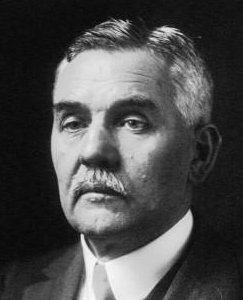On January 19, 1915, a significant event took place in the field of lighting technology. French inventor Georges Claude was granted a patent for his groundbreaking invention, the neon discharge tube. This invention would go on to revolutionize the way businesses and cities were illuminated, leaving an indelible mark on the iconic visual culture of the 20th century.
Claude’s invention involved the use of sealed tubes filled with neon gas. By passing an electric current through these tubes, a bright and glowing light was produced. This discovery opened up a whole new world of possibilities for lighting, as neon lighting quickly gained popularity for advertising and signage.
Before Claude’s invention, traditional lighting methods such as incandescent bulbs and gas lamps were the norm. These methods had their limitations, with incandescent bulbs being relatively dim and gas lamps requiring constant maintenance. The neon discharge tube provided a more efficient and visually striking alternative.
The impact of Claude’s neon lighting was immediate. Businesses quickly recognized the potential of this new form of illumination for advertising purposes. Neon signs became a common sight in cities, attracting attention with their vibrant colors and unique glow. The ability to create eye-catching and visually appealing signage transformed the way businesses marketed themselves, forever changing the urban landscape.
One of the earliest and most famous examples of neon signage can be traced back to the 1920s. The iconic “Hollywood” sign in Los Angeles, California, originally read “Hollywoodland” and was adorned with neon lights. While the original purpose of the sign was to advertise a real estate development, it quickly became a symbol of the entertainment industry and the glamour associated with it. The use of neon lighting played a crucial role in establishing this visual identity.
Claude’s invention also had a significant impact on the art world. Artists began to incorporate neon lighting into their works, exploring its unique aesthetic qualities. The use of neon tubes as a medium for artistic expression became a defining feature of the art movements of the time, such as the Pop Art movement in the 1960s.
While neon lighting became synonymous with advertising and art, its practical applications extended beyond these realms. Neon lights were used for street lighting, providing a more efficient and visually appealing alternative to traditional methods. Cities around the world embraced this new technology, transforming their nighttime landscapes and creating a vibrant atmosphere.
Georges Claude’s patent for the neon discharge tube paved the way for further advancements in lighting technology. Over the years, neon lighting evolved, with improvements in efficiency and the introduction of different gases to create a wider range of colors. However, Claude’s initial invention remains a pivotal moment in the history of lighting.
Today, neon lighting continues to captivate and inspire. Its distinctive glow and vibrant colors evoke a sense of nostalgia while remaining relevant in contemporary design. From the dazzling lights of Times Square to the neon-lit streets of Tokyo, the influence of Georges Claude’s invention can still be seen and felt.
SEO Excerpt:
Georges Claude’s patent for the neon discharge tube in 1915 revolutionized lighting technology. Discover the impact of this groundbreaking invention on advertising, art, and urban landscapes, and how it continues to inspire today.

